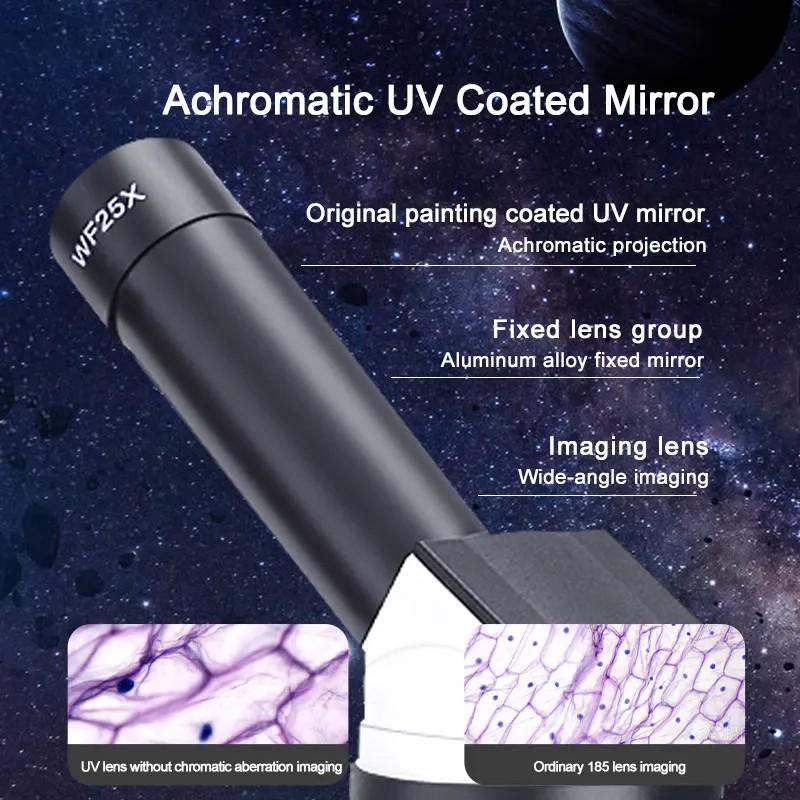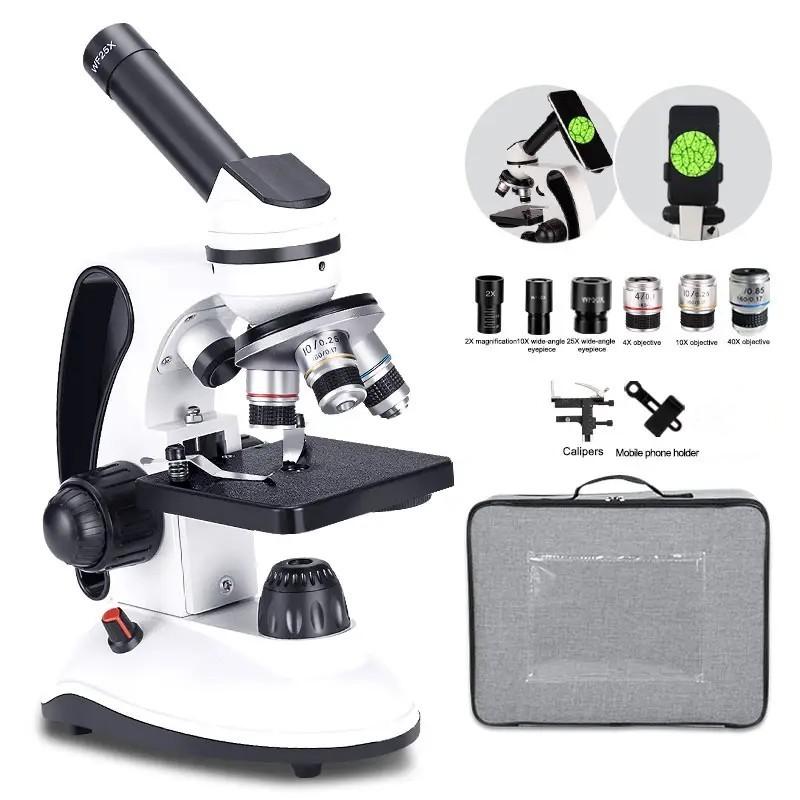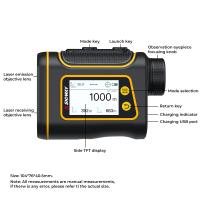How Much Magnification To See Bacteria ?
To see bacteria, a minimum magnification of around 400x is typically required. However, higher magnifications, such as 1000x or more, are often used to observe bacteria in more detail.
1、 Microscopy techniques for observing bacteria.
Microscopy techniques for observing bacteria have evolved significantly over the years, allowing scientists to study these microorganisms in great detail. The magnification required to see bacteria depends on the type of microscope being used and the specific requirements of the study.
In general, bacteria are microscopic organisms that range in size from 0.2 to 10 micrometers. To observe bacteria, a microscope with a magnification of at least 1000x is typically required. This level of magnification allows scientists to visualize individual bacterial cells and study their morphology, structure, and behavior.
Traditional light microscopes, also known as brightfield microscopes, can achieve magnifications up to 2000x. These microscopes use visible light to illuminate the sample, and the bacteria appear as dark objects against a bright background. However, the resolution of light microscopes is limited by the wavelength of visible light, making it difficult to observe fine details of bacterial structures.
To overcome the limitations of light microscopy, scientists have developed more advanced techniques such as phase-contrast microscopy, darkfield microscopy, and fluorescence microscopy. These techniques enhance the contrast and resolution of bacterial samples, allowing for better visualization of their structures and interactions.
In recent years, electron microscopy has become an invaluable tool for studying bacteria. Electron microscopes use a beam of electrons instead of light to illuminate the sample, providing much higher resolution and magnification capabilities. Transmission electron microscopy (TEM) can achieve magnifications up to 1,000,000x, allowing for the visualization of ultrastructural details of bacterial cells. Scanning electron microscopy (SEM) provides three-dimensional images of the bacterial surface at magnifications up to 100,000x.
It is important to note that while high magnification is essential for observing bacteria, it is not the only factor to consider. Sample preparation techniques, staining methods, and the choice of microscope all play crucial roles in obtaining clear and accurate images of bacteria.
In conclusion, the magnification required to see bacteria depends on the microscopy technique being used. Light microscopes with magnifications of at least 1000x are typically used, but more advanced techniques such as electron microscopy can achieve much higher magnifications. The choice of microscope and sample preparation techniques are equally important in obtaining detailed and accurate observations of bacteria.

2、 Optical magnification in bacterial microscopy.
Optical magnification in bacterial microscopy plays a crucial role in enabling scientists to observe and study bacteria. Bacteria are microscopic organisms, typically ranging in size from 0.2 to 10 micrometers. To visualize these tiny organisms, a certain level of magnification is required.
The magnification needed to see bacteria depends on the specific microscope being used. In general, a compound light microscope is commonly employed for bacterial microscopy. This type of microscope uses a combination of lenses to magnify the image of the specimen. The total magnification achieved is a product of the magnification of the objective lens and the eyepiece lens.
Typically, a compound light microscope can provide magnifications ranging from 40x to 1000x. To visualize bacteria, a minimum magnification of 400x is often recommended. At this magnification, bacteria become visible as small, rod-shaped or spherical structures. However, to observe finer details of bacterial morphology and structure, higher magnifications are necessary.
Advancements in microscopy technology have led to the development of more powerful microscopes, such as phase-contrast and fluorescence microscopes. These microscopes can provide higher magnifications and improved contrast, allowing for better visualization of bacteria. For example, phase-contrast microscopy enhances the contrast of transparent specimens, making it easier to observe bacterial cells.
In recent years, there has been a growing interest in electron microscopy for bacterial studies. Electron microscopes use a beam of electrons instead of light to magnify the specimen. This technique can achieve much higher magnifications, up to several hundred thousand times. Electron microscopy has revolutionized our understanding of bacterial structure and has allowed for the visualization of intricate details at the nanoscale.
In conclusion, the minimum magnification required to see bacteria is typically around 400x using a compound light microscope. However, higher magnifications are often necessary to observe finer details of bacterial morphology. Advancements in microscopy technology, such as phase-contrast and electron microscopy, have further improved our ability to visualize and study bacteria at higher magnifications.

3、 Electron microscopy for high-resolution bacterial visualization.
Electron microscopy is a powerful tool for high-resolution bacterial visualization. It allows scientists to observe bacteria at a level of detail that is not possible with other microscopy techniques. However, the specific magnification required to see bacteria depends on various factors, including the size and shape of the bacteria, as well as the specific details that need to be observed.
In general, bacteria are very small, ranging in size from 0.2 to 10 micrometers. To visualize bacteria at this scale, a high magnification is necessary. Transmission electron microscopy (TEM) is commonly used for bacterial visualization, and it can provide magnifications up to several hundred thousand times. This level of magnification allows scientists to observe the fine details of bacterial structures, such as cell walls, flagella, and pili.
However, it is important to note that the magnification alone is not the only factor that determines the resolution and clarity of the images. The quality of the electron microscope, the sample preparation techniques, and the expertise of the operator also play crucial roles in obtaining high-resolution images of bacteria.
In recent years, advancements in electron microscopy techniques have further improved the resolution and capabilities of bacterial visualization. Cryo-electron microscopy (cryo-EM) has emerged as a powerful technique for studying the structure of bacterial proteins and complexes. It allows scientists to visualize bacteria in their native state, without the need for chemical fixation or staining. Cryo-EM can provide atomic-level resolution, enabling researchers to study the intricate details of bacterial structures and their interactions with other molecules.
In conclusion, the specific magnification required to see bacteria depends on various factors, but electron microscopy techniques, such as TEM and cryo-EM, can provide the necessary magnification and resolution to visualize bacteria at the desired level of detail. The latest advancements in electron microscopy have further enhanced our ability to study the structure and function of bacteria, opening up new avenues for research in microbiology and related fields.

4、 Achieving sufficient magnification to observe bacterial structures.
Achieving sufficient magnification to observe bacterial structures is crucial in the field of microbiology. Bacteria are microscopic organisms, typically ranging in size from 0.2 to 10 micrometers, making them difficult to observe with the naked eye. To visualize these tiny structures, scientists rely on microscopes that provide the necessary magnification.
The magnification required to see bacteria depends on the specific structures or details one aims to observe. Generally, a magnification of at least 1000x is necessary to visualize bacterial cells and their internal components. This level of magnification allows researchers to study the morphology, arrangement, and behavior of bacteria.
To achieve such magnification, microbiologists commonly use compound light microscopes. These microscopes utilize a combination of lenses to magnify the image of the specimen. However, the maximum useful magnification of a compound light microscope is typically around 1000x. To surpass this limit, higher magnification techniques such as electron microscopy are employed.
Electron microscopes use a beam of electrons instead of light to visualize the specimen. They can achieve much higher magnifications, ranging from 10,000x to over 1,000,000x. Transmission electron microscopy (TEM) and scanning electron microscopy (SEM) are two common types of electron microscopes used to observe bacterial structures. TEM provides detailed internal views of bacteria, while SEM offers a three-dimensional surface view.
In recent years, advancements in microscopy techniques have allowed for even higher magnifications and improved resolution. Super-resolution microscopy techniques, such as stimulated emission depletion (STED) microscopy and structured illumination microscopy (SIM), have pushed the limits of resolution beyond the diffraction limit of light. These techniques enable scientists to observe bacterial structures with unprecedented detail, providing insights into their nanoscale organization and dynamics.
In conclusion, achieving sufficient magnification to observe bacterial structures requires at least 1000x magnification, which can be achieved using compound light microscopes. However, electron microscopy techniques offer even higher magnifications, allowing for more detailed observations. Furthermore, recent advancements in super-resolution microscopy techniques have revolutionized the field, enabling scientists to visualize bacterial structures with exceptional resolution.






























